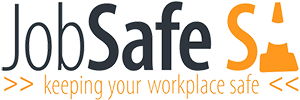The work area should be large enough to accommodate you, allow the full range of motions involved in performing required tasks, and provide room for the equipment and materials that make up the workstation.
Optimum reach zone: Where frequently used objects are close to the user to avoid excessive extended reaching.
Maximum reach zone: Objects that are needed during the day yet not frequently used.
Requires the user to reach and stretch slightly to access.
Outer reach zone: Where seldom used objects (e.g. in/out trays) are located as this section requires the user to perform excessive extended reaching.
FEATURES OF GOOD DESK DESIGN
A good desk should have:
~ rounded corners with no sharp edges
~ good access for legs with no obstacles under the desk to cause discomfort and possible injury
~a flat, smooth surface for ease of writing, of a neutral colour with a non reflective finish
~adjustability to fit most users (AS/NZS 4442 Office Desks 1997 recommends a range of adjustments for seated tasks of at least 150mm, from 610mm to 760mm in height, easily adjustable from the seated position).
The correct postures and positions to adopt at your work station/desk:
Chair
- push you bottom and hips as far back as they can go in the chair.
- adjust the seat height so you feet are flat on the floor or alternatively use a footrest.
- adjust the chair back to a 100-110 degree recline.
- adjust the armrest so that your shoulders are relaxed, or if in the way remove the rest.
altogether. - stable 5 star base on chair, and seat depth of between 33 cm – 48 cm.
Keyboard
- position the keyboard directly in front of you.
- determine what section of the keyboard you use most frequently and position that part in front of you.
- if you sit in a forward upright position tilt the keyboard away from you at a negative angle, alternatively if you sit reclined a slight positive tilt will help maintain a straight wrist position.
- wrist rests can help maintain neutral positions and can be used to rest the palms of your hands on in between keystrokes.
Monitor
- centre the monitor directly in front of you.
- the top of the monitor should be approximately 2 – 3cm above seated eye level.
- sit at least an arms length away from the screen.
- reduce glare by positioning screen away from windows, or using curtains and blinds.
- overhead lights can also add to glare so adjust the vertical screen angle.
Document holder
- holder is big enough to accommodate the document being used.
- position source documents directly in front of you between the monitor and the keyboard using an in-line copy stand.
- if no in-line copy stand available position the stand directly next to the screen.
Telephones
- place you telephone within easy reach. A telephone stand can help.
- use a headset or speaker phone to eliminate cradling the handset between your ear and shoulder.
Helpful tips:
- Vary your tasks. Your muscles need lots of change and movement. If one task will take a prolonged period of time, take frequent rests from it.
- Take appropriate breaks at and away from the desk. Be sure to always take you lunch break.
- Creatively place other equipment like printers and faxes away from your desk so that you have to get out of your chair to access them.
- Rest and exercise you eyes by looking away from thee screen to a point in the distance.
- Regularly check and maintain your posture.
TIRED? SORE? UNCOMFORTABLE?
Follow these tips to make your work more comfortable
Many aches and pains can be relieved by changing your working posture or work patterns:
| Body part fatigued |
Common contributing factors |
What can you try |
| Back of neck | Looking down at documents, or keyboard |
|
| Side of neck | Looking to one side | Locate documents and screen directly in front of you |
| Top, outside or front of shoulders | Keyboard too high, arms unsupported |
|
| Lower back | Inadequate lumbar support |
|
| Upper back | Twisted posture |
|
| Right arm or shoulder | Arm outstretched unsupported |
|
| Left arm, shoulder or neck | Reaching for telephone or cradling telephone on shoulder |
|
| Leg discomfort, swollen feet | Underside of thighs compressed against the chair seat |
|
| Headaches | Posture, visual problems, noise, stress, glare, high work load |
|
| Eye fatigue, temporary short sightedness | Visual problems, screen too close, poor image quality, glare, screen reflections |
|
Table taken from Mark Dohrmann and Partners, Ergonomists www.ergonomics.com.au
USEFUL LINKS
Computer Workstation Ergonomics
A publication by the University of Western Australia based upon Australian Standard AS3590.
For further information, refer to Australian Standards:
Screen-based workstations: AS3590-1990
Part 1: Visual Display Units
Part 2: Workstation Furniture
Part 3: Input Devices
Interior Lighting: AS 1680.2. 0-1990
Part 1: General Principles & Recommendations
Interior Lighting: AS 1680.2. 2-1990
Part 2.0: Recommendations for specific tasks and interiors
Interior Lighting: AS 1680.2. 2-1994
Part 2.2: Office and screen-based tasks
Acknowledgements:
Mark Dohrmann and Partners, Ergonomists www.ergonomics.com.au
Officewise www.worksafe.vic.gov.au
SafeWork SA Safeguard: Computer workstations – Design Guidelines
